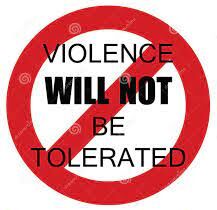
Combatting Violence: A Call to Action for Justice and Social Harmony
Violence, a pervasive and distressing problem, casts its shadow across individuals, families, and communities worldwide. Manifesting in various forms, from physical and emotional abuse to psychological trauma, its impact reverberates in homes, workplaces, schools, and public spaces. This insidious issue often goes underreported, leaving victims without the necessary support and protection. This underscores the urgent need to raise awareness, instill a culture of zero tolerance, and foster a proactive approach to prevent and address this issue. By holding perpetrators accountable and providing essential resources for victims, we strive to create a world where safety, well-being, and peace prevail.

Violence can have devastating consequences, including physical injuries, mental health problems, and even death. Moreover, it can lead to social and economic costs, such as lost productivity, increased healthcare expenses, and reduced quality of life.
Overview of Violence:
This is a complex and multifaceted phenomenon encompassing various forms of intentional harm and aggression directed towards individuals, communities, or society. It manifests in physical, emotional, and psychological dimensions and occurs across diverse settings, including homes, workplaces, schools, and public spaces.
The causes are diverse and often interconnected. They can stem from social, economic, cultural, and individual factors. Poverty, inequality, discrimination, substance abuse, family dysfunction, and exposure to violence in childhood are potential contributors. Additionally, societal norms that perpetuate aggression or condone violence as a means of conflict resolution can play a role.
Violence yields severe consequences at individual, interpersonal, and societal levels. Physically, it can result in injuries, disabilities, and even death. The mental health impact includes trauma, anxiety, depression, and post-traumatic stress disorder (PTSD). Socially, it disrupts relationships, erodes trust, and fosters fear, leading to long-lasting consequences such as increased healthcare costs, reduced productivity, and a diminished quality of life.
Despite its widespread impact, violence is often underreported, and victims may not receive the support and protection they need. Therefore, it is essential to raise awareness of the issue and promote zero tolerance for violence. This means taking a proactive approach to prevent it from occurring, holding perpetrators accountable for their actions, and providing victims with the resources and services they require to recover and heal. By working together, we can create a safer and more peaceful world for everyone.
Mitigating violence involves comprehensive and collaborative efforts. Education and awareness campaigns can challenge societal norms that tolerate such. Early intervention programs addressing childhood trauma and promoting conflict resolution skills are crucial. Establishing support systems for victims, including accessible mental health services, shelters, and legal assistance, is essential. Community-based initiatives, such as neighborhood watch programs, can contribute to a safer environment. Additionally, enforcing and strengthening laws against violence, along with promoting nonviolent communication and conflict resolution strategies, are key elements in mitigating the prevalence and impact of violence.
Disclaimer: The information provided in this content is for general informational purposes only. It is not intended as medical or healthcare advice, diagnosis, or treatment. Always seek the advice of a qualified healthcare professional with any questions you may have regarding a medical condition or healthcare decisions.

